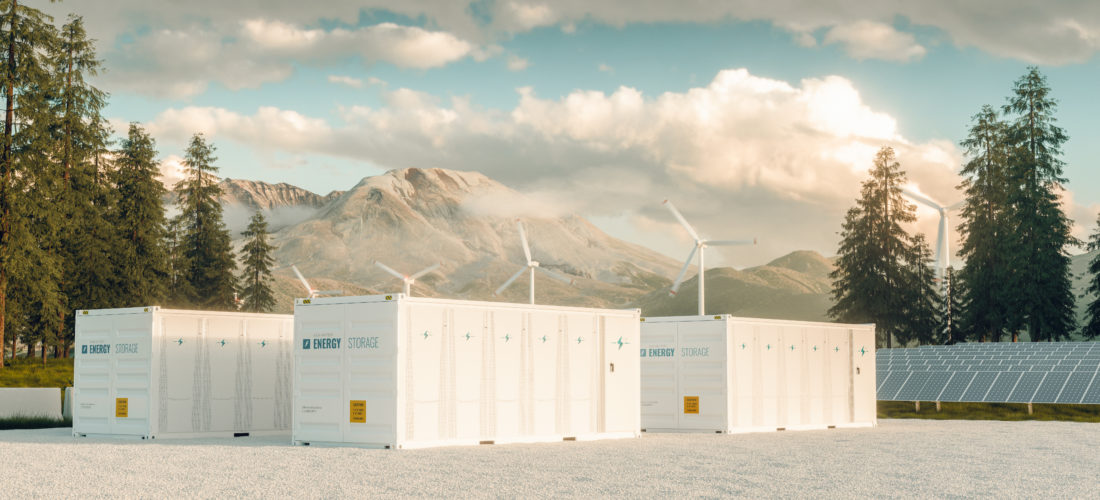
Could All Power Plants Be Virtual One Day?
- On December 2, 2021
The once-exotic idea of a virtual power plant (VPP)—a combination of distributed generation assets controlled like a single source of power—is gaining traction. Tesla is touting VPPs in California, Chile is due to install Latin America’s first VPP and even Big Oil is muscling in on the concept.
It’s hardly surprising. While the world is crying out for more generation capacity, preferably without emissions, consider the hurdles still facing any developer or investor seeking to build a traditional power plant.
First, you need a permit to build the plant, which often involves lengthy battles with regulatory authorities and the submission of detailed environmental assessments. Then, you must make sure you can get a grid connection, which is increasingly easier said than done in many markets. Finally, you need a robust business case to entice investors. And all this is before you have even begun to select vendors, appoint contractors and start wielding shovels. Small wonder that most power plant developments in the world take years rather than months to go from concept to operation.
Now, look at a VPP. For this, all you need is a set of distributed generation assets, a willing off-taker (not normally hard to find), and a piece of fancy software (this is the hard part, but a growing number of companies have the necessary platforms). Compared to traditional energy projects, VPPs are almost entirely free of risk and hassle. If you are tapping into existing assets, then community pushback is unlikely to be a concern - quite the opposite; companies that have gone to the trouble of installing distributed energy systems will likely be glad of any opportunity to monetize the assets through a VPP. Similarly, the investment required is minimal unless you are intending to build out the generation capacity yourself.
In addition to low overheads, VPPs have proven to be capable of serving highly lucrative energy markets. In Australia, for example, Enel X now supplies a third of all frequency control ancillary services (FCAS) on the grid through a VPP made up of almost 100 commercial and industrial sites around the country. “This success is built on a few fundamental competitive advantages", Enel X says. “First, VPPs are built from existing industrial equipment. This means they can be built quickly, and with a low capital investment per MW of capacity. In addition, VPPs can respond faster than traditional power stations, which means that the capacity they offer is more valuable in the FCAS market.”
Surveying these benefits, one could legitimately ask whether it makes sense to carry on building conventional power stations at all. Proclaiming an end to centralized power plants might be a bit of a stretch for now, but what is clear is that there is a growing case to be made for making sure all or most new distributed generation is VPP friendly. This is not hard, given a view of the technology stack required to make a VPP work. This consists of plant and device-level supervisory control and data acquisition systems, power plant controllers and grid interfaces, secure and resilient communications networks, a central monitoring and asset management platform, analytics and reporting, and a market integration system.
The trick is for all these systems to be able to talk to one other, which can be hard if they all come from different vendors. At Inaccess, we cover all the bases through our state-of-the-art platform Unity, giving developers, investors and asset owners an easy route to tap into tomorrow’s VPP opportunities.
Want to know how to create value through renewable energy asset aggregation platforms? Download our white paper on VPPs!
The operational profile of a battery providing frequency response services, for example, is quite different to one that makes money from energy arbitrage. And the value of these services can change over time, so battery operators may find themselves changing strategy halfway through the game.
Finally, the mode of operation can have a significant impact on the performance and lifespan of the battery. What does this mean for battery plant design and asset management? Clearly, flexibility and adaptability are key. Asset owner/operators should assume that the battery plant they have today will not operate in the same way five or 10 years from now. The implication for system design is that flexibility needs to be built in from the start.
The modular design of most battery systems is a bonus in allowing for future expansion, although some owner/operators may choose to oversize their project at the outset to allow for capacity degradation and/or increased utilization in future. Battery systems should also come with advanced control software that can be used to shift operating profiles in response to new market opportunities. Ideally, such software platforms should be capable of integration with grid infrastructure to enable automated responses to system operator signals.
At the very least, battery monitoring and management systems should be able to:
- Manage big volumes of data with no latency, providing real-time monitoring and control possibilities.
- Offer real-time charge/discharge regulation to enforce the implementation of boundary conditions.
- Provide data management that is transparent and accessible to multiple project stakeholders.
- Grow and integrate with other systems to support replacement and/or augmentation strategies throughout the asset’s lifetime.
- Provide assessment metrics in case of deviation from preferred parameter settings, along with notifications and alarms.
If you're looking for a system that meets all these requirements, Inaccess can help you with its integrated platform, UNITY. Covering central monitoring, power plant controller and supervisory control and data acquisition functions, UNITY has been designed from the bottom up to maximize the flexibility of battery storage assets.
Learn more about Virtual Power Plants and how you can create value through renewable energy asset aggregation platforms by downloading our white paper:
